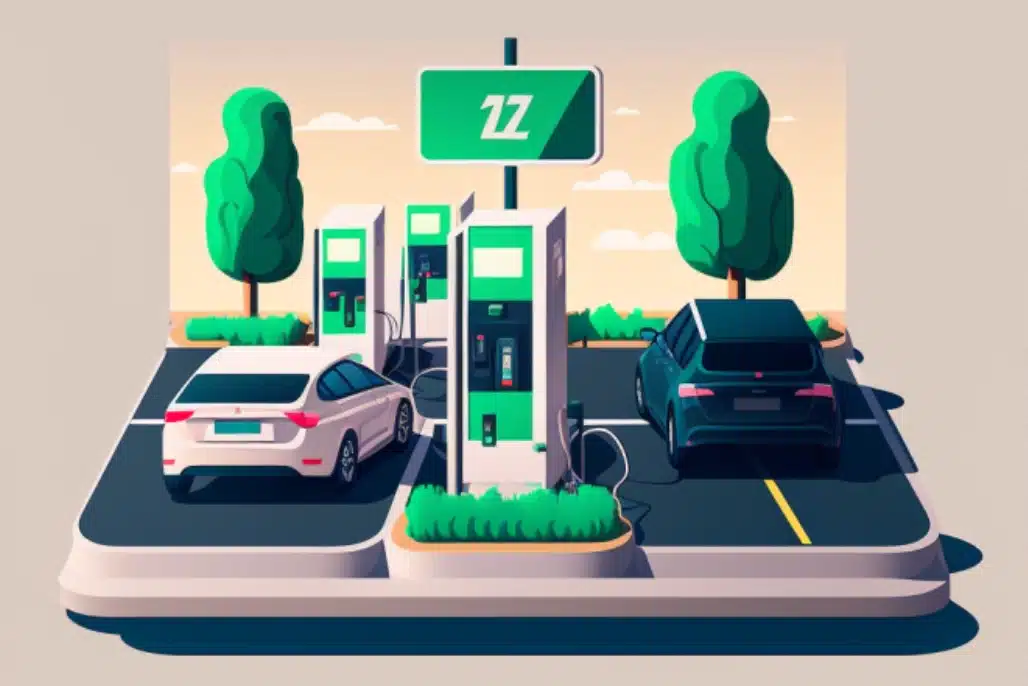As I detailed in a previous article on the challenges of migrating to an electric vehicle fleet, many companies are now migrating to electrically powered vehicle fleets for their operations. Whilst many may concentrate on having sufficient vehicles and respective achievable range based on the calculated amount of deliveries and suchlike there remains a far more important factor to consider:

“How can I make sure all of my new vehicles are charged ready for the next day’s operations?” After all, it’s no use having all the vehicles and capacity if you can’t charge them up on time!
A Range of Calculations
Calculating the range required by each vehicle is a purely algorithmic exercise and whether you perform the calculations via graph theory, standard operational analysis, or some rule based methodology in a legacy spreadsheet - what you have at the end of the day is a list of vehicles detailing their respective routes and their minimum range required for operations.
However, calculating the minimum range required is one thing but, as said, making sure each vehicle has enough charge to successfully achieve that range is another.
Leaving aside considerations such as the prevailing weather (temperature, wind, rain, …) with its varying effect on vehicle range and taking into account the age of the vehicle (and its respective decreased efficiency), let’s consider a number of factors that will influence the success, or failure, of having all of your vehicles charged up to a sufficient level and ready to go on time.
Number of Charging Points
Does your business have sufficient chargers such that all vehicles can be charged at once?
Whilst this may be possible with smaller fleets, the cost of providing both enough charge points and enough space to locate them all may be prohibitive for larger organisations - especially if they’re based in urban areas with limited space.
Without a sufficient number of charge points to ensure all vehicles have one to themselves, either vehicles will have to be manually moved between points during down-time or some electronically controlled means will have to be found such that all vehicles can be cabled in but not all active at the same time (due to power constraints per charger).
The inherent hidden costs involved in having extra staff or buying in bespoke solutions needs to be considered as part of the migration process.
Capacity of Charging Points
Each charging point will also have a maximum rated capacity at which it can deliver power to a plugged in vehicle and, naturally, charging points do not always operate at full capacity due to a number of reasons:
- The connected vehicle cannot operate at that charge level due to temperature constraints, battery charge level, or simply because its maximum capacity is below that of the charger.
- The charging point itself may not be able to pull enough power from the local grid to supply its maximum output - particularly if it’s sharing a local connection with a number of other chargers that are also demanding a large amount of power.
- Charging points can develop faults that affect their operation or take them out of service completely - this needs to be considered in any charging plan.
Electrical Capacity Restrictions
Leading on from the last section, the problems related to the fact that the aggregate electrical demand of a number of charging points may be constrained by the capacity of the local electrical grid may be addressed in a number of ways:
- Increased capacity provision
-
May be expensive to construct and require planning permission
- Dependent on electricity supplier and their own local grid capacity (they simply may not be able to provide that level of power).
-
- Staggered charging profiles
- Implemented via a provision that not all vehicles are charged at the same time and an algorithmic way is found of charging to the required minimum range levels, whilst simultaneously, not exceeding a set maximum power demand from the aggregated charging point demand.
A flexible algorithmic approach to charging, for example, may be far cheaper than the construction and supply of extra power capacity and can be achieved via increasing the efficiency of use of available resources.
Monetary Restrictions
Aside from the practical considerations outlined in the previous section, the fleet owner may also be constrained by electrical prices and may choose to charge its vehicles when electricity prices are at their lowest, using demand driven pricing, if offered by their electricity supplier.
In this case, methods may have to be built into the charging strategy, such that some kind of balance is struck between the price of electricity and the importance of charging vehicles to their required range.
For example, if electricity prices are substantially higher than normal then the operator may choose to cut down their ‘safety margin’ of charge or perhaps choose to delay the delivery of parcels (if they’re a parcel delivery firm) for a day or so until prices come down if it doesn’t affect their delivery commitments.
Ultimately should prices continue to rise or the operator chooses to pursue a green initiative of renewable energy usage (perhaps to reduce its carbon cost) then other ways need to be found to address this issue whether through on-site generation via solar PV panels, or battery storage capacity to store energy when it’s available at lower prices.
Although this may seem an edge case at the moment, in the future this kind of arbitration between cost and supply, and indeed local generation (if possible), will become ever more important.
Ongoing Challenges… and Opportunities
Problems, and solutions, associated with fleet logistics, delivery planning, and suchlike are already well known and well established - and still an area of active research.
However, the challenge of moving to an alternate power source along with its nuances brings additional challenges, and opportunities, for a migrating fleet operator.
Fortunately, many of these challenges can be addressed more easily via careful optimisation and planning through the use of software resources rather than investing in conventional, tangible, and expensive infrastructure as in the past.
Talk to us today to learn more.








